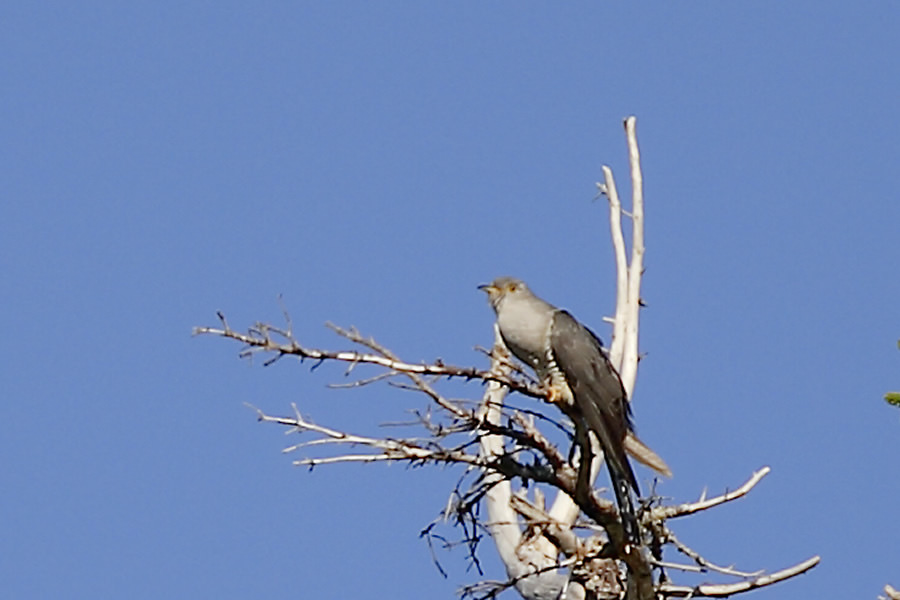Order: Cuculiformes, Family: Cuculidae ; Total length: 35 cm; Distribution: Asia, Europe and Africa
The Common Cuckoo is a summer bird that can be found in the fields and forests of Japan starting in mid-May. The male bird makes a "cuk-ckoo" sound—which is where the species gets its name—while the female has a "pipipipi" call. The Common Cuckoo is a brood parasite, which means it lets other birds in grasslands and the forest's edge incubate its eggs. In recent years, there has been growing concern over the decline in the population of the cuckoo as well as host species.
Play birds singing
While some species of the cuckoo family, such as Roadrunners in North America, raise their young by themselves, all four cuckoo species that breed in Japan—the Common Cuckoo, the Lesser Cuckoo, the Oriental Cuckoo and the Rofus Hawk-Cuckoo—display brood parasitism behavior, laying their eggs in the nests of another bird species and even allowing the host bird to incubate the egg and nurture the chicks. It is well known that White-cheeked Starlings and some species of ducks lay their eggs in the nests of the same species, behavior that is called “intraspecific brood parasitism.”
For birds with a low survival rate, of primary importance is the bearing of offspring. So why, then, do some birds rely on others to raise their chicks? While clearly unusual behavior, the practice may have evolved from intraspecific brood parasitism as a means of obligating parasitism.
In the past, the Common Cuckoo relied on the Meadow Bunting to care for its eggs, but recently such species as the Azure-winged Magpie and Oriental Reed Warbler have been serving as hosts. The Common Cuckoo may have initiated this change because the Meadow Bunting realized the deception and has since prevented its nest from being parasitized.
The Lesser Cuckoo relies on the Japanese Bush Warbler for the care for its eggs, but as it doesn't appear that the Lesser Cuckoos population has increased and Bush Warbler numbers have declined, it is quite likely that brood parasitism has not enjoyed a high success rate.
The Sapporo and Koriyama chapters of the Wild Bird Society of Japan have long been studying the habits of the Common Cuckoo but have yet to determine the reason for the decrease of the bird's population. It may be related to environmental changes in Southeast Asia, where the Common Cuckoo winters, and a decline in host birds and insects.
Caterpillars, over the course of their evolution, are thought to have grown hair on their bodies as a countermeasure to protect them from predators. Caterpillars, however, are a preferred meal of Common Cuckoos and Lesser Cuckoos.


Although very similar in appearance to the Common Cuckoo, the male Oriental Cuckoo has a distinctive call—“po-po, po-po”—that sounds like someone rapping a cylinder. The Lesser Cuckoo also looks like the Oriental Cuckoo but is a little smaller than both the Common Cuckoo and Oriental Cuckoo and the call of males sounds like “hot-togisu” or “kyo-kyo-kyo-kyo.”